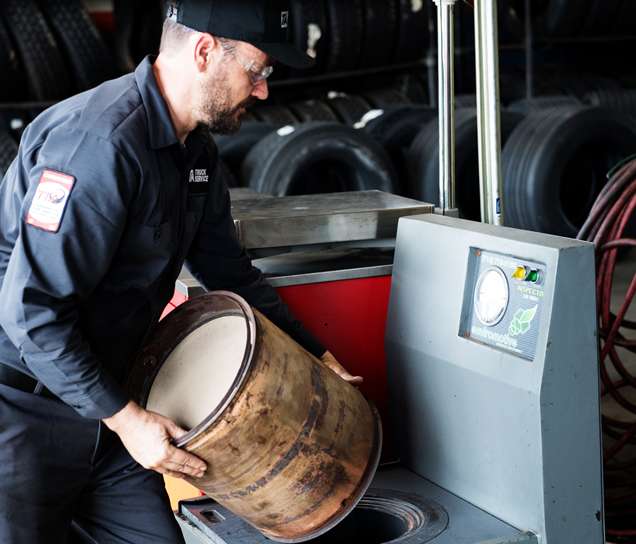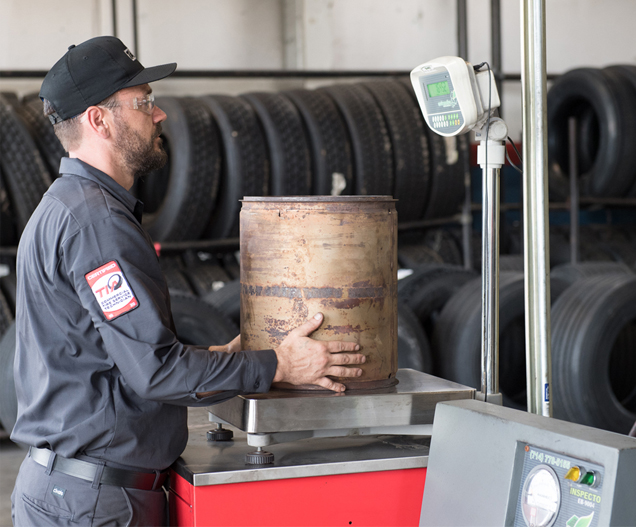Director of Technical Service, TravelCenters of America
Don’t Let Aftertreatment System Maintenance Be an Afterthought

Diesel-powered vehicles have adopted increasingly complex exhaust emissions aftertreatment systems over the last decade, and if ignored can lead to downtime and a loss of productivity. Modern truck systems and technology are always changing, and every fleet’s preventive maintenance procedures must be adjusted to include their aftertreatment systems.
A Proactive Approach to Aftertreatment System Maintenance
When emissions regulations first went into effect in 2004, manufacturers began installing exhaust gas recirculation (EGR) technology to reduce NOx emissions, and then the diesel particulate filter (DPF) system in 2007 to reduce particulate matter. Later, they introduced the selective catalytic reduction (SCR) system along with diesel exhaust fluid (DEF) to help further reduce nitrogen oxide (NOx) emissions and keep up with increasingly stringent regulations.
While it originally took some time for the industry to adapt to these changes and new technologies, equipment manufacturers today continue to produce more efficient systems both in terms of engine quality and from a maintenance perspective. However, much like any other major system on a truck, proactive aftertreatment system maintenance is vital to the vehicle’s uptime.
A common problem that creates issues for modern aftertreatment systems is a lack of clean air or a leak in the intake system reducing turbo boost, typically due to a lack of maintenance. This can result in an excess of DPF regenerations and lead to an increase in fuel consumption, and in some cases a state of derate or a complete shutdown of power. Vehicles today are equipped with various warning lights to let the operator know an engine issue exists, and if ignored can lead to downtime and in some cases very costly repairs. Make sure your drivers understand what each warning light means and what action is necessary to take if they come on.
Establishing a routine air filter maintenance program can also help prevent this from hurting the performance of your aftertreatment systems. With a little guidance from engine and truck manufacturers and your service provider, you can create an air filter maintenance program that works for your fleet.
A prematurely clogged or dirty DPF is another frequent issue that will most certainly slow down the performance of an aftertreatment system. A backed up DPF can be caused by many variables, including dirty air filters as mentioned above, or that simply the filter is near the end of its estimated lifecycle.
Whether you experience a clogged DPF due to a lack of air filter maintenance, leaking intake system or the filter is at the end of its lifecycle, it’s important to have it cleaned or replaced immediately to avoid more time consuming and costly repairs down the road. Incorporating an aftertreatment system inspection into your fleet’s preventive maintenance routine can help identify dirty filters before they lead to unnecessary downtime.

Have your system inspected by a professional technician and establish a preventive maintenance process that includes your aftertreatment systems. TA Truck Service offers a full scope of aftertreatment services at many locations, including DPF cleaning within several markets. All TA Truck Service locations have JPRO diagnostics capabilities and can complete parked regenerations when necessary.
About TA Truck Service
The TA Truck Service network includes 245 truck service facilities, 1,090 repair bays, nearly 3,000 technicians with certifications in ASE and TIA, a fleet of more than 2,300 RoadSquad® and third-party provider service trucks and more than 200 TechOn-SITE™ mobile maintenance vehicles. TA Truck Service is a division of TravelCenters of America LLC and is an authorized Freightliner Trucks and Western Star Trucks warranty provider.


